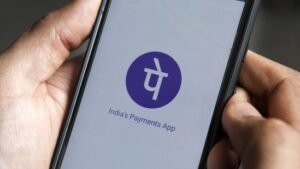Despite some setbacks, the Indian banking sector witnessed strong growth and transformation in FY24 (it layed from 1 April 2023 until 31 March 2024), especially in digital payments and financial performance, Boston Consulting Group (BCG) Banking Sector Roundup reported.

Growth in Digital Payments
UPI transactions have also grown by a staggering 57 per cent YoY during FY24; PhonePe and Google Pay together command an 86 per cent market share of this category.
Furthermore, It has been observed that the number of Unified Payment Interfaces has doubled in the last three years. It can be seen that both
the transactions made via credit cards and UPI transactions have increased YoY. Meanwhile, the number of debit card transactions has decreased YoY.
Financial Performance and Profitability
Indian banking continued its solid momentum with 15% credit growth and 13% deposit growth in FY24. For the first time, the banking system’s net profit crossed ₹3 lakh crore, and all the bank groups exceeded 1% ROA, making the banking sector highly profitable. This performance was strongly aided by high credit growth, robust fee income growth, and low credit costs.
Alone, private banks clocked a 25 per cent increase in profits YoY, while public sector banks (PSBs) clocked a 34 per cent growth in net profit. GNPAs hit a 10-year low of 2.8 per cent. The PSBs brought their GNPAs down to 3.5 per cent, while private banks reported GNPAs of 1.7 per cent, much below the industry average.
Economic Growth and Ratings
India’s economy showed growth in FY24 far surpassing all estimates – 8.2% YoY – and is projected to be between 6.2% and 7% YoY in FY25. S&P Global Ratings upgraded India’s sovereign rating outlook from stable to positive recently citing impressive growth, and better quality of government expenditure.
Operational Challenges and Trends
Although the recent financials were strong, the magnitude was lower as the CI ratio for the sector worsened by 206 basis points to 49.6%. Whereas PSBs had a CI ratio of 52%, which was up by 50% in FY23 and private banks increased slightly to 47% from 46% in FY23.
Greater provisioning movements were varying, with PSBs reporting a decline of 37%, whereas private banks, particularly HDFC Bank and Kotak Mahindra Bank increased by 71% and 244% respectively.
Although reduced, the entire banking system remains well-capitalized with 33 out of 35 whole banks having a CRAR of more than 15% against the necessary minimum of 9%.
Also Read: Indian banks and payment systems are unaffected by the global outage
Market Valuation
This marks investor confidence in their performance and stability as the public sector banks have been way ahead of private banks and non-banking financial companies (NBFCs) when it comes to market valuation growth in three years.
The strong digital payment and profitability growth of the Indian banking sector overall, as well as an improvement in asset quality and economic performance is indicative of a promising future for the BB & B group.
Report By: Sonali Sarkar
Publish By: Your News Sources